Aglaonema plants, or you may know them by their common name, Chinese Evergreens, are beautiful, popular houseplant that are great additions to any home! They have several different varieties and make a great indoor plant.
As indoor plants, they are among one of the most diverse with many colorful and unique species to choose from for your home.
Years ago there was only few different kinds of these, but now, there are so many to choose from! They are known by a few common names that you might recognize. Here’s some of the most common names:
- Red Chinese Evergreen
- Siam Aglaonema
- Siam Aurora
- Aglaonema Firecracker
- Siam Aurora Red Aglaonema
- Siam
Some other variations that people commonly see in the greenhouses are the Silver Queen, Red Valentine, Red Emerald, and others. For those who love pink and red, this is a great plant to have with plenty of ways to show off their vibrant leaves!
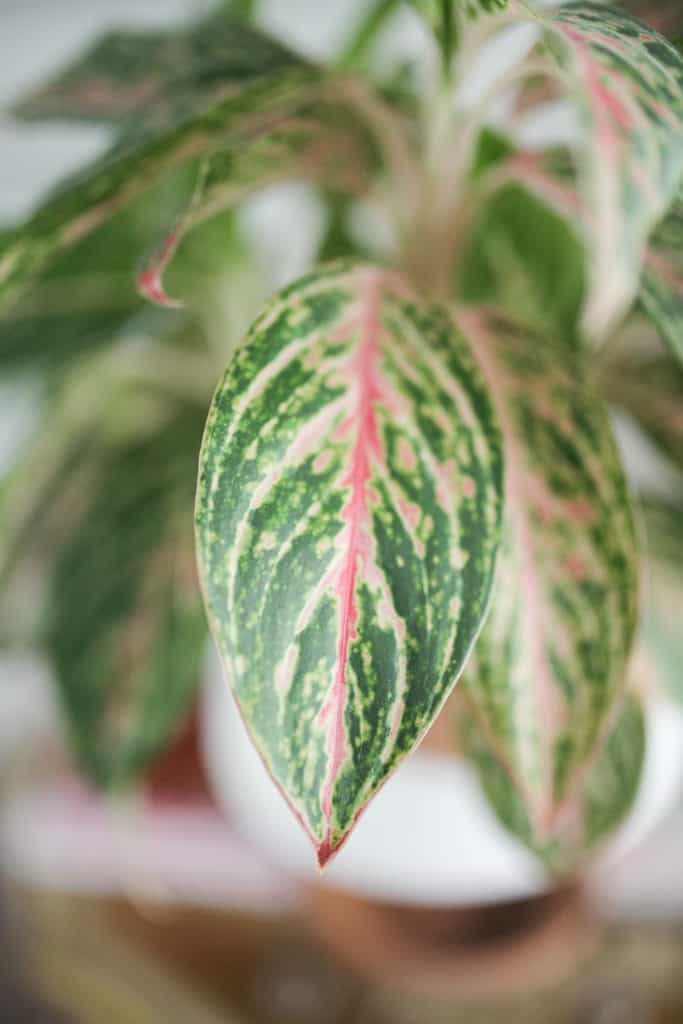
The most popular variations of the Chinese Evergreen are the Stripes, Maria, Cecilia, and the Emerald Beauty. All of these have diverse color schemes, sizes, and shapes on their leaves. They can truly be stunning houseplants and provide that extra vibrancy that you need in your home!
If you are considering buying a Chinese Evergreen or already own one, here are some key fun facts and care tips that you should take into consideration. If you follow these, your aglaonema will always be fresh, vibrant, and healthy.
Table of Contents
Aglaonema Background
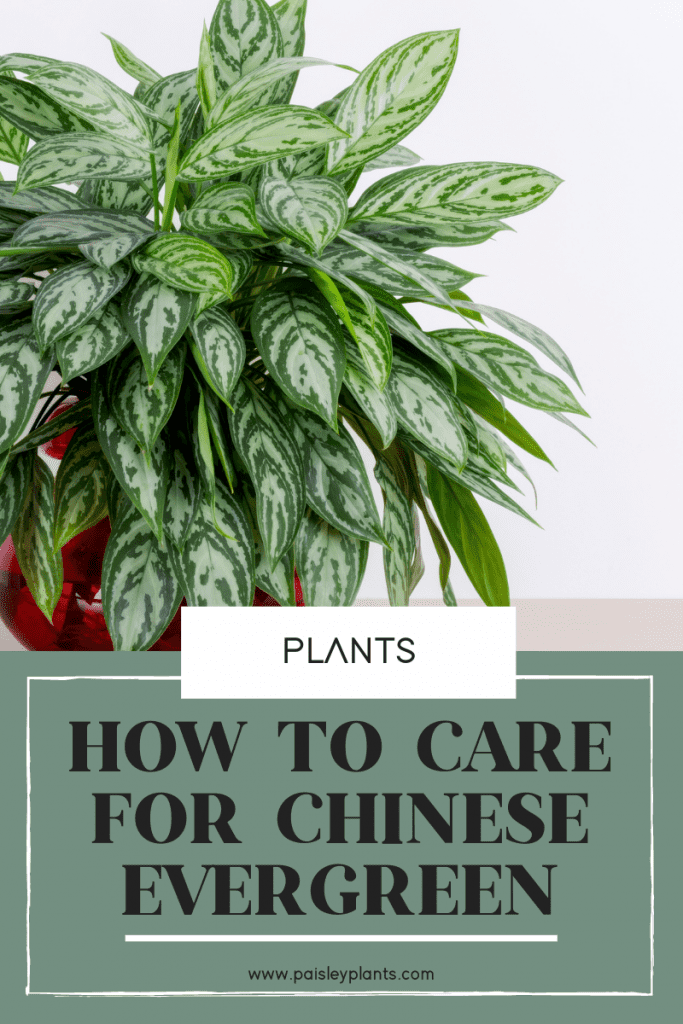
This post includes affiliate links.
Aglaonemas are also known as the lucky plant and are native to Asia and New Guinea. They are easy to take care of and their leaves can be white, dark green, pink, or even other colors.
NASA has put this plant on the top ten list of clean plants for your home! The plant has a great ability to remove benzene and formaldehyde from the air. Some people use these plants to help clean their homes of the bad air and keep their homes fresh and healthy.
Chinese Evergreen Care

Here’s how you should care for your Chinese Evergreen to keep it healthy and vibrant in your home.
Water Requirements
Luckily, this plant is hardy and won’t mind if you forget to water it from time to time and can be withstand a bit of low water conditions, but don’t forget to water it for too long!
This will harm the plant and potentially cause it to stop growing as fast. The soil should not be dry more than a third of the way down into the pot. Sticking your finger in the pot will help you know the moisture level.
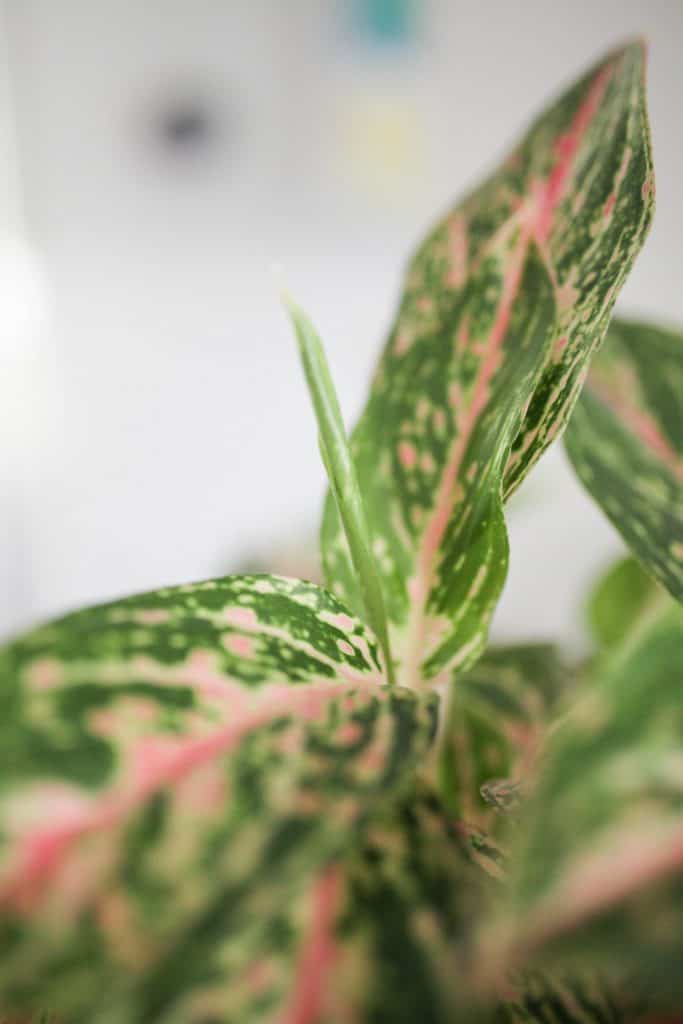
The natural environment for the Chinese Evergreen is humid and the plant usually absorbs the moisture from the air. You might have to mist your plant occasionally which is easy to do. Simply fill a spray bottle with tap water and spray! You can also place it on a pebble tray with water to help with the moisture that the plant needs.
No matter what you do, make sure that you water your plant enough and always keep it mostly moist to allow for it to properly grow and stay healthy. I water my plant once a week or just whenever the soil becomes dry. Also be sure to not overwater it with too much water or you could cause it to have root rot!
Light
These lucky plants need to be in a place where they have bright, indirect light or even low light conditions. They do well under fluorescent lighting as well. If you want to keep your plant in the office, this is a good plant for that!
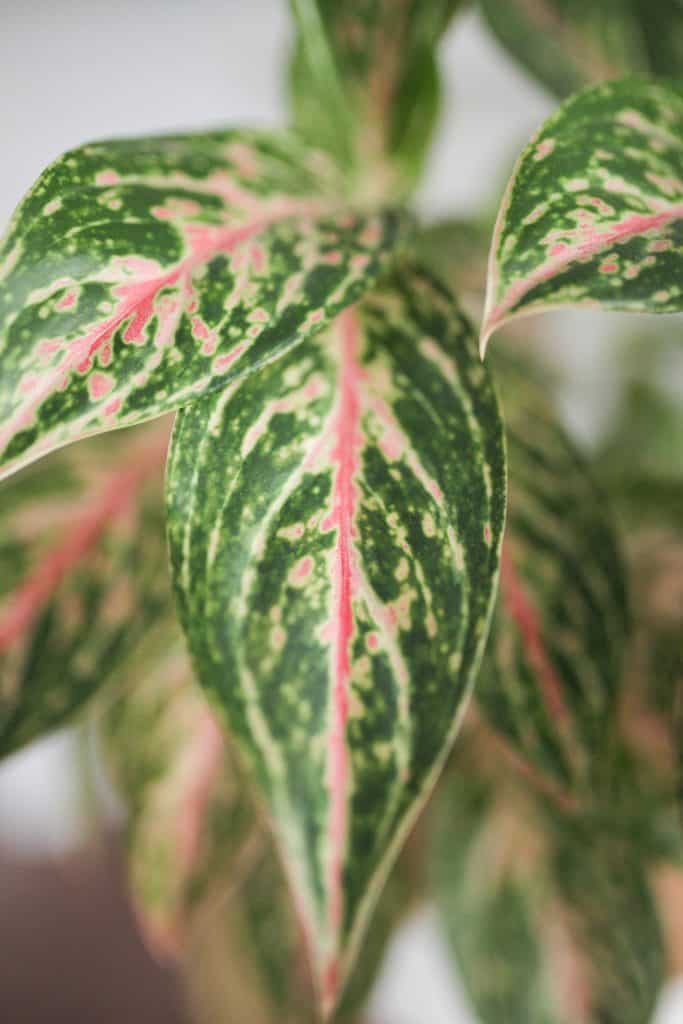
It would not be a good idea to leave your plant in the sun for too long. Too much bright light can contribute to taking away it’s moisture, potentially burning the leaves and damaging its beauty.
Generally, most species of this plant will handle low light much better. This is easier for you, and it also helps the plant remain healthy and happy!
Soil
The soil you choose for your lucky plant should be peat-based and made for indoor plants. There are some great brands out there to choose from and many of the indoor potting soil is great for nutrients and minerals!
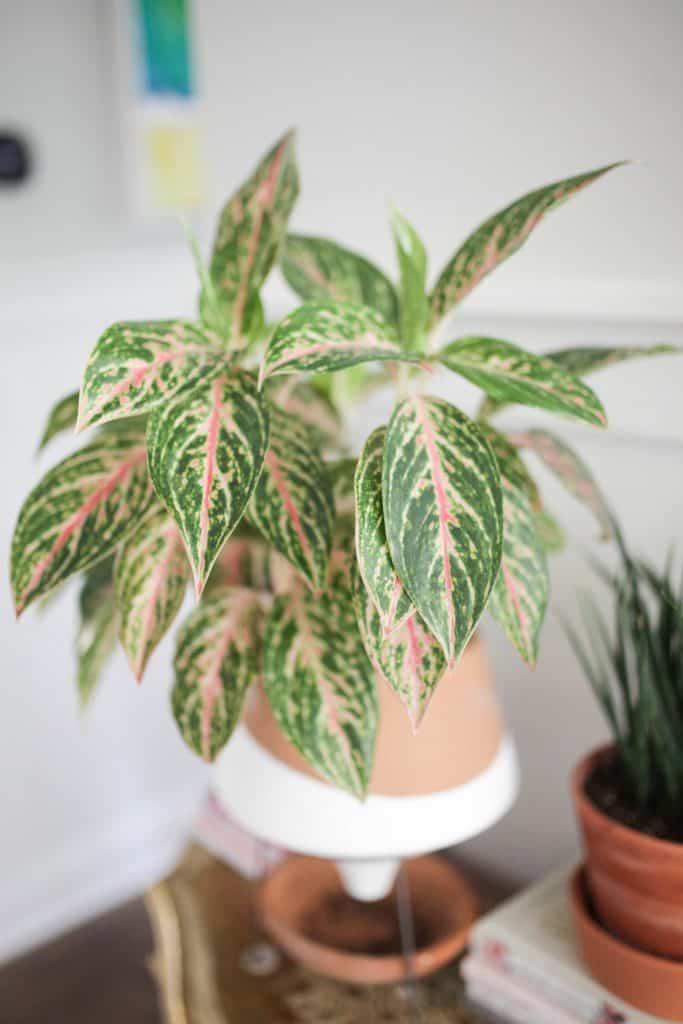
You shouldn’t have a heavy soil mix for your plant. Try to keep it simple and focus on aeration. You want to make sure that your plant can properly be oxygenated and drain so it does not become too moist.
If you have difficulty with the heaviness, pumice can be a great additive to your potting soil. All you have to do is add three parts potting soil and one part pumice or even perlite. When you repot your Chinese Evergreen, make sure to do it in spring or summer.
Temperature
Aglaonemas are tropical plants so they like to be in warmer temperatures. As houseplants, they thrive best when you keep your air between 65-75 degrees Fahrenheit. Cold drafts are not their best friend, so make sure to keep these plants away from wintery temperatures!
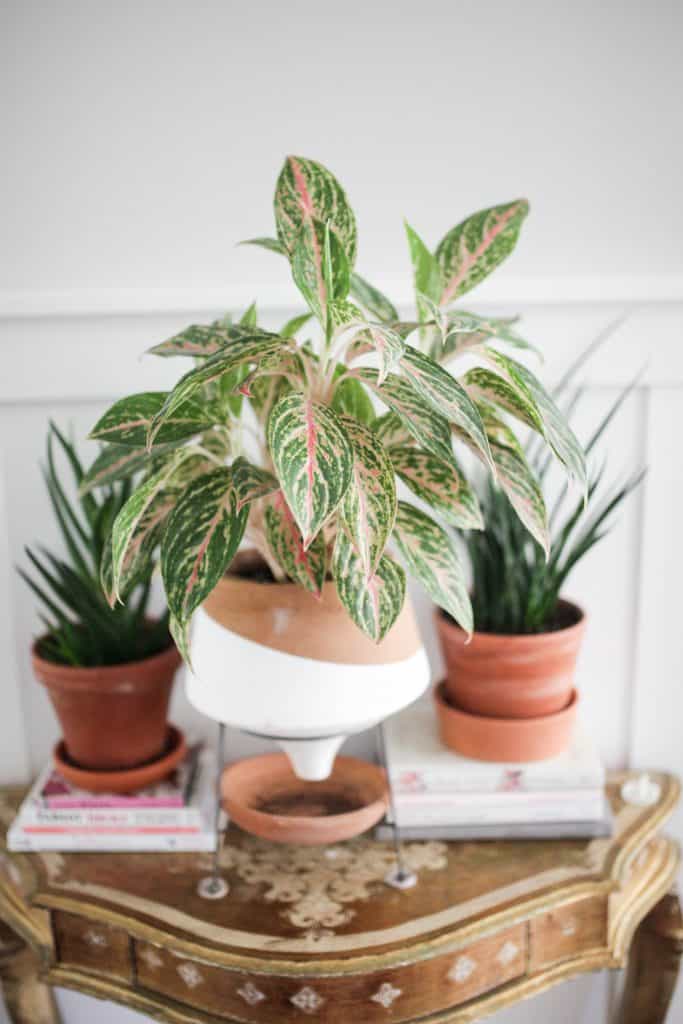
With this plant, the warmer the spot in your home, the better it is for your plant’s health and for how they can grow and mature.
Humidity
Even though they need more water than most, they don’t need that much humidity. Aglaonemas need moderate to high humidity. As with watering, if you feel that your plant is in a particularly dry situation, you can mist or place your pot within a tray of water to help with ensuring it is watered appropriately.
Fertilizer
These popular houseplants can use fertilizer to help them keep fresh and healthy! It is best to implement fertilizer during the growing season, spring and summer, to help keep your plants fed with a healthy blend of nutrients and minerals.
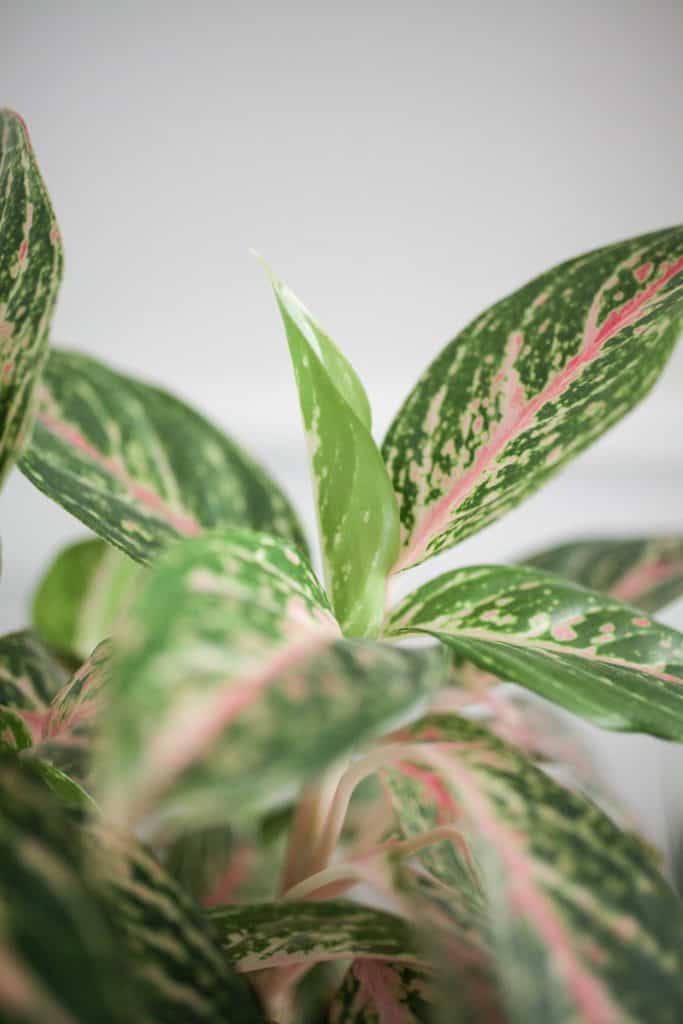
Chinese Evergreens do best when you find a water-soluble houseplant fertilizer that is balanced. For best results, only use half of what is recommended. It is also not necessary to fertilize during the winter months. That’s because your Chinese Evergreen lies dormant when the cold months arrive!
Toxicity
Unfortunately, this plant may be beautiful, but it is also toxic to cats and dogs according to ASPCA. If you have these pets, make sure that you keep this out of their reach!
Pests
Pests are dreaded, but expected, even with the Chinese Evergreen. While some people have never seen any bugs in their plants, there are the occasional mealy bugs and even spider mites. Others could also see aphids or scales on their plants.
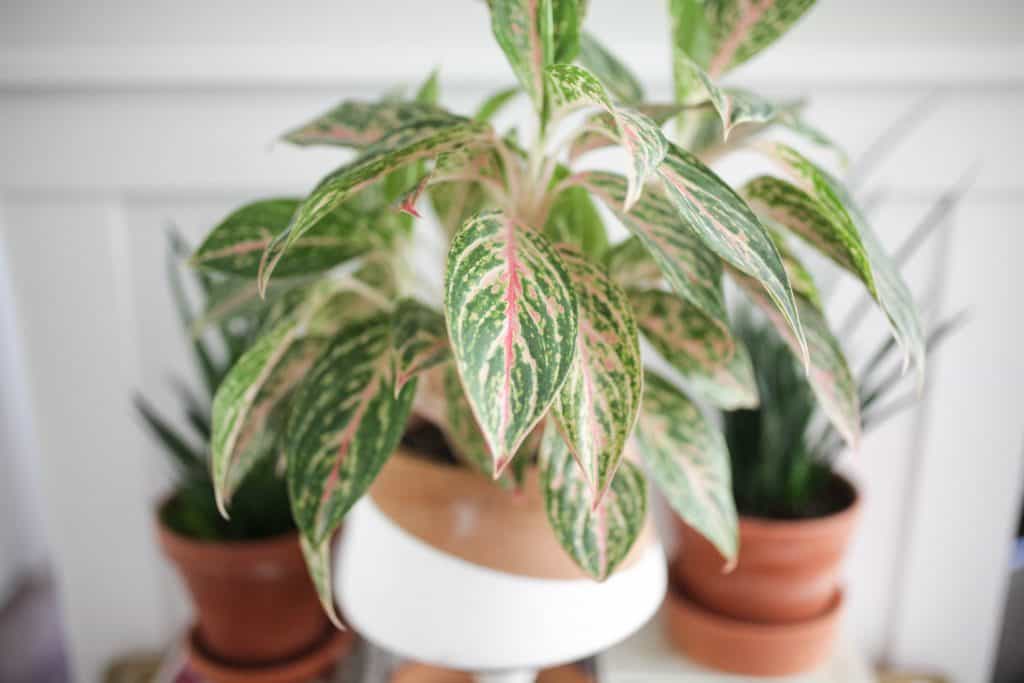
If you can identify these early on, you can help your plant recover before it is too late. If you keep them under control, you can also limit the number of houseplants you have that are affected as they travel from plant to plant!
Pruning
With this plant, it is not common for you to have to prune, but it might come up depending on the appearance of your ornamental plants. You should only prune to remove dead, darker leaves that appear. Make sure you cut as close to the stem as possible.
If you see anything odd in the shape of your lucky plant, it is best not to prune it back. This is because the live growth is important and can damage your plant if you try to manicure it. The lucky plant is best when natural, otherwise, it can mature to a lesser extent.
Propagating
If you are looking to create more of your lucky plant, there are some techniques that you can use to do this. Division is the best route for this plant and the easiest for growers.
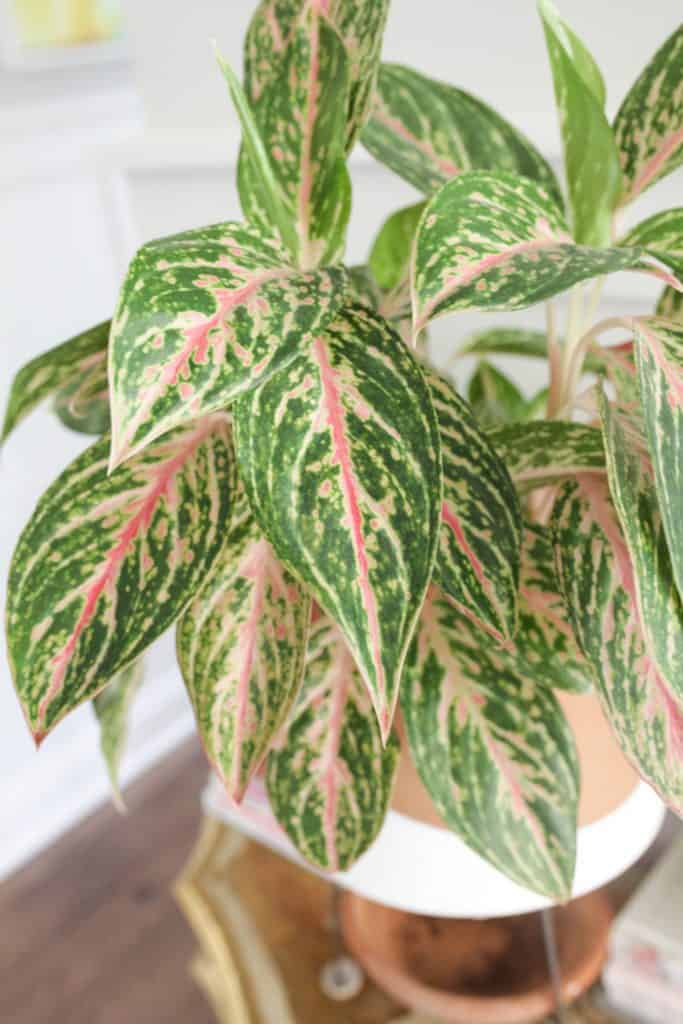
In order to divide your plant, make sure you find the points where your plant is emerging from the soil. The plant will naturally propagate and all you have to do is find these. Removing the plant gently from the soil and gently pry the plant apart to replant in another pot.
If you have trouble because your plant is rootbound, you can use a sharp knife to cut the root mass into sections for replanting. Make sure you leave an even number of stalks and leaves on each plant if you choose this method.
Diseases
Unfortunately, there are some diseases to look out for with your aglaonema. One of the most susceptible of the diseases is anthracnose as well as Myrothecium. These are both fungal. They can appear as discoloration, holes, patchy dry brown spots, but become worse over time.
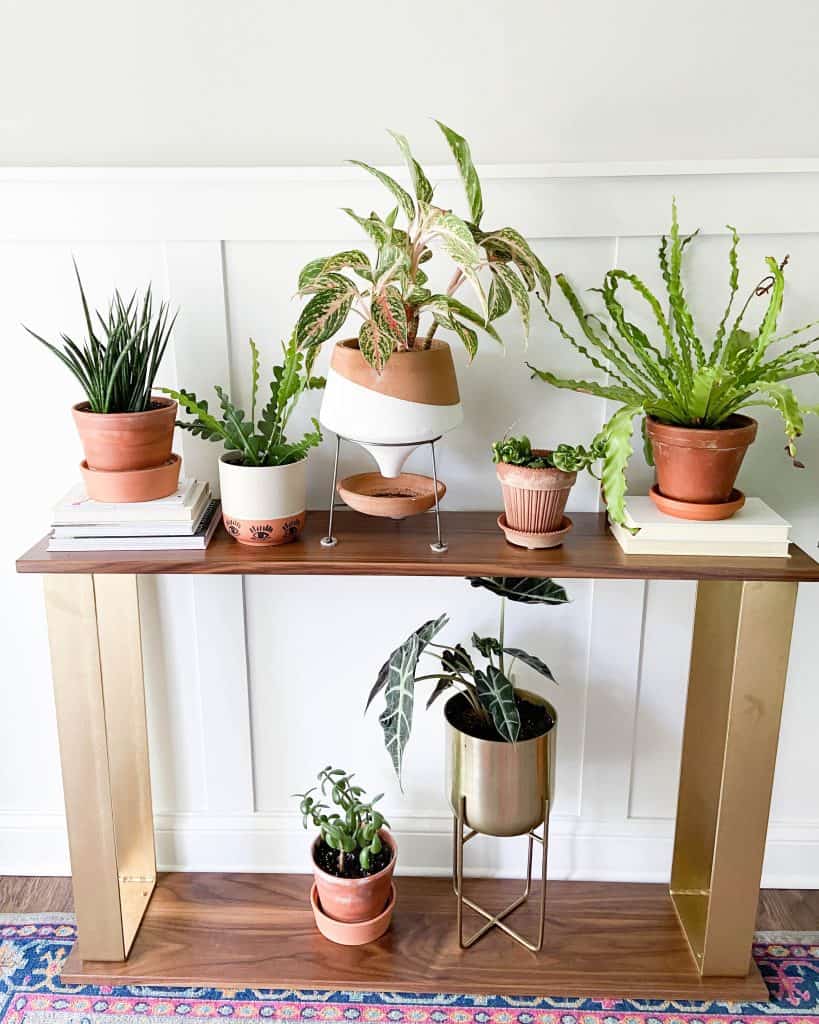
To treat this, all you must do is lightly mist with a liquid copper fungicide like Monterey Liqui-Cop. If you apply this and let it dry overnight, your plant will start to heal and fight the infection.
Conclusion
Your lucky plant is a one-of-a-kind addition to your houseplant collection, but you must make sure you take care of it properly. With these steps, you will have a beautiful, thriving Chinese Evergreen in no time!
Now that you know how to care for a Chinese Evergreen, check out our care tips for a happy Monstera plant!

